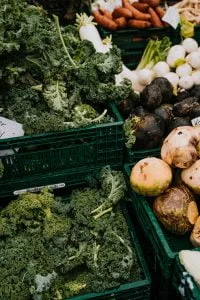Discover the secrets of winter gardening with this article on greenhouse heating and winter crops. Learn how to make the most of your greenhouse and which heating options best suit your winter gardening plans. Also discover what delicious fruits and vegetables you can grow in the colder months and get helpful tips for keeping your garden healthy even when temperatures drop.
Greenhouse heating
If you install a greenhouse in your garden and heat it, there are several options for winter gardening. Just be sure to adjust the temperature of your greenhouse according to what you will be growing in it. It is also a tip to properly insulate your greenhouse as this will reduce energy costs anyway.
There are a total of three different types of greenhouse heating: soil heating, a petroleum heater and an electric heater. If you choose soil heating, chances are your seeds will germinate faster. It is also energy efficient and there is little heat waste. The other two ways, on the other hand, are easier to install, but they are not as environmentally friendly.

Fresh fruits and vegetables
We list below some tasty fruits and vegetables that you can grow in the winter. So you can make tasty soup from them or a tasty dessert at that dinner party you’ve been looking forward to for weeks.
Vegetables
- Corn salad: plant this four to eight weeks before the first frost.
- Cabbages like cauliflower & Brussels sprouts: they don’t like the heat so don’t plant them too early.
- Beets & kale: grow almost year-round.
- Garlic: plant them in the fall to enjoy them in the spring.
Fruit
Generally, fruit grows better in summer, but if it is not too cold, a lot of berries or fruits such as blackberries, blueberries, cherries and pears can also grow. Plant them in the fall so you can enjoy them in the spring.
If you keep up your gardening even in the fall and winter, it also brings some benefits. For example, it is good for your soil because you can use it longer and it is also better protected from the cold weather since it is covered. You can also keep vegetables in the field longer so you can harvest at different times.

5 helpful tips for winter gardening
- Keep your pond frost-free to allow CO2 to escape and keep the water from acidifying. To do this, put a pot of warm water on the ice so it can melt.
- It is best to keep your shrubs snow-free by occasionally knocking off the thick layer of snow.
- This may not be a gardening tip, but it is also very important! Make sure the birds have a place to go in your garden and thus preserve the fauna and flora. Set up a feeding table or hang fat balls, for example.
- Install a green roof to keep heating costs under control that way.
- By the end of winter, when the snow is gone and it is no longer freezing, you may start watering your potted plants again and already putting some compost on your flowers.

In short, with the right knowledge about greenhouse heating, winter crops and smart winter maintenance tips, you’ll be ready to bring your garden to life even in the coldest months. Enjoy fresh fruits and vegetables and keep your garden alive with our helpful tips. Don’t let winter splendor hinder your green oasis!
Do you want to prepare for the cold winter months with the help of some coziness? Are you already fully into the Christmas spirit, but feel your home is still missing something? Then be sure to read our Christmas Trends 2023.
Sources: Ilovemygarden, Natuurpunt & Vtwonen.
Would you like to cite this article as a source? Then use:
Deferm, S. (2023, Dec. 8). Gardening in winter. Apartment.be. Accessed on (date XX/XX/202X), from https://www.appartement.be/tuinieren-in-de-winter






